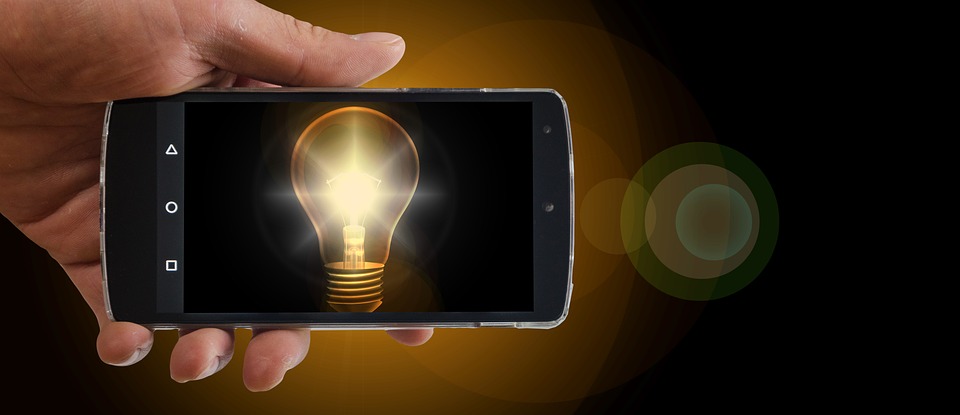What is LiFi, the Internet of light, and how it works?

September 7, 2020
What is LiFi?
LiFi is a wireless optical network technology. Specifically, it is a form of visible light communications system (VLC) that makes use of light-emitting diodes (LEDs) for data transmission.
LiFi has a special distinction from other VLC systems. Like WiFi, LiFi is the only form of VLC that allows light transmission. However, instead of the radio spectrum, it makes the light spectrum visible through LED bulbs with a special chip.
Li-Fi is a spectacular improvement over Wi-Fi at all levels. For starters, the transmission speed is up to 100 times faster! Research that is being carried out by different technological research centers such as the prestigious German Fraunhofer Institute or the Shanghai Institute of Technical Physics as either stabilized and in real environments with transfer rates of 1 Gbps (one gigabit per second) and studies could reach a speed of 10 Gbps, i.e. multiply by one thousand the actual speed of Wi-Fi.
Simply put, LiFi is a visible light or VLC (Visible Light Communication) data transmission system. The first time we heard about him was in July 2011 when Harald Hass, a professor at the University of Edinburgh, coined the term during a talk.
A little history
The term Communication by Visible Light implies the use of any share of electromagnetic spectrum light to transmit information and it was in 2010 that physicist Harald Haas of the University of Edinburgh (UNITED Kingdom), founded the D-Light project. In 2011 he began promoting this technology in order to commercial it. At the end of 2011 different groups and companies of this industry formed in Li-Fi Consortium in order to publicize promote and this technology.
During the introduction of the new transmission form, Harald Haas demonstrated its LiFi technology using an LED bulb of only $3. “It’s about data through enlightenment”, Haas said. “Data transmission using an LED bulb is free, not to mention LED bulbs, which in themselves are extremely efficient.”
How LiFi works?
LiFi uses visible light as a means for data transmission. As a type of VLC system, it requires two components: a photodiode and a light source. The photodiode acts as a transceiver that receives light signals and transmits them back. The light source transmits data using the light emitted as a medium. In this case, the light-emitting diodes (LEDs) serve as a light source. They are equipped with a chip that serves as the signal processing unit.
LED bulbs are semiconductors. This means that the current supplied to the bulb can be modulated, which in turn modulates the light they emit. This process occurs at extremely high speeds that are impassable to the human eye. The data is entered into the bulb and sends the data at extremely high speeds to the photodiode. It converts received data into a human-perceptible binary data stream, such as video and audio applications.
LIFI vs. Wifi
Lifi technology is more, faster cheaper and even safer than Wifi. These are its main advantages:
- Faster: The current speed of the Wifi ranges from 11 to 300 Mbit/s and that of Lifi also much according to the latest studies carried out. The most accepted is 10 Gbit/s, but it has been federated that it could reach 224 Gbit/s and a 1.5 Gbit film in milliseconds.
- Cheaper and more sustainable: it is up to 10 times cheaper than Wifi, precisely fewer components and spends less energy. It would be enough just to light a lamp!
- More accessible: any luminaries can be easily converted into an Internet connection point, as only a simple LiFi emitter is required.
- Safer: light does not pass through walls such as radio waves, and this prevents intruders from intercepting LiFi communications over the wireless network.
- More bandwidth: the luminous spectrum is 10,000 times greater than the radio, which sharpens its ability to drive and transmit data per second.
- No interference: electronic light does not interfere with radio communications, does not interface with other systems or compromise transmissions of aircraft, ships, etc.
- Invisible cables: the LiFi takes advantage of the luminaries and dispenses with the router, so it works without the need for cables. In addition, it can word with infrared light, imperceptible to the human eye, or with visible light carried a very low intensity.
- No saturation: the internet connection by light could prevent the collapse of the radio spectrum that, according to Harald Haas, inventor of the LiFi, could arrive in 2025.
With the emergence and development of LiFi technology many foreshadow the obsolescence of Wifi and other wireless networks. We will still have to wait a few years to see if the streetlights, in addition to illuminating our streets, connect us to the Internet at the speed of light.
Li-Fi future
As research in this field progresses, we may be able to be Wi-Fi without a doubt. This technology is in the experimental phase but we are sure how fast everything is advancing, faster almost than the light itself, we will not be surprised by anything that in a few years can forever change the way we connect an internet in our homes. You should not leave our mobile under a simple one while charging or while browsing without having connectivity problems as happens many times with Wi-Fi.
However, this technology as it has complications that make its commissioning not definitive. One of the most important is that, being light; it is not able to make objects. Such a basic premise is sold as an advantage as, unlike the actual WiFi network, neighbors could not steal our connection. However, this presents another problem, and is that any object that stands in and shadows between the network and the device will cause to lose the connection. Experts are already working on a solution to these problems. For example, that they work not only with direct light but with that reflected on walls or other objects.








